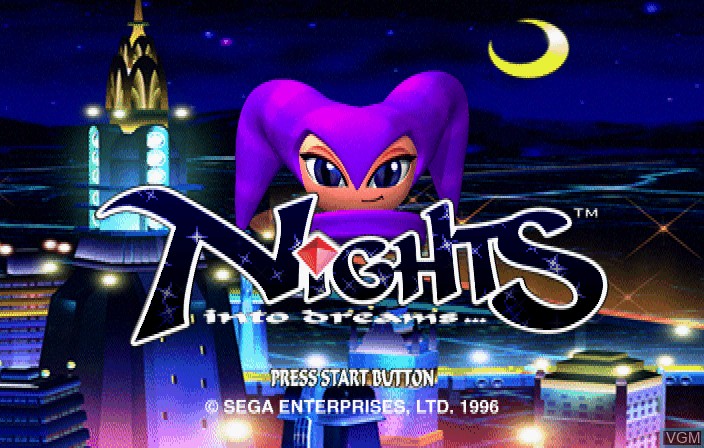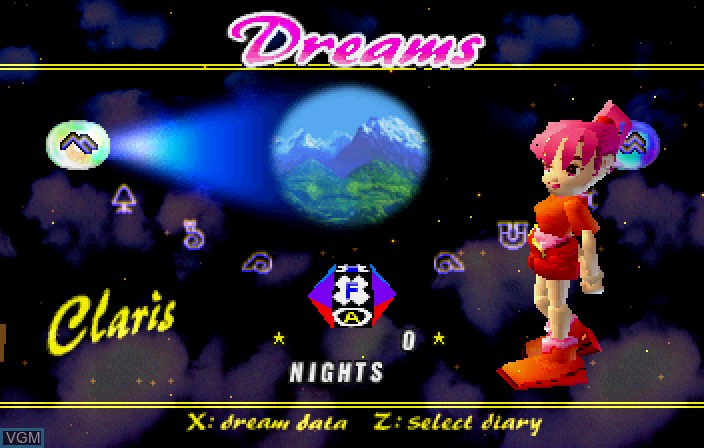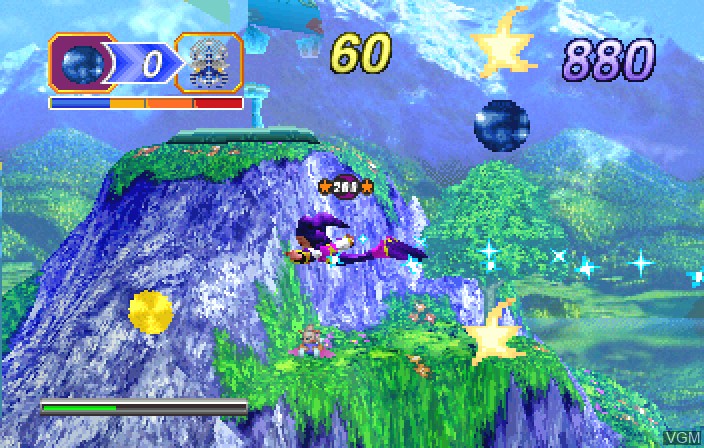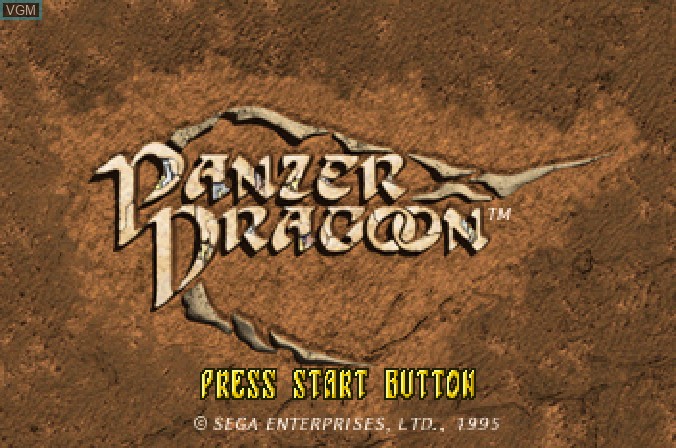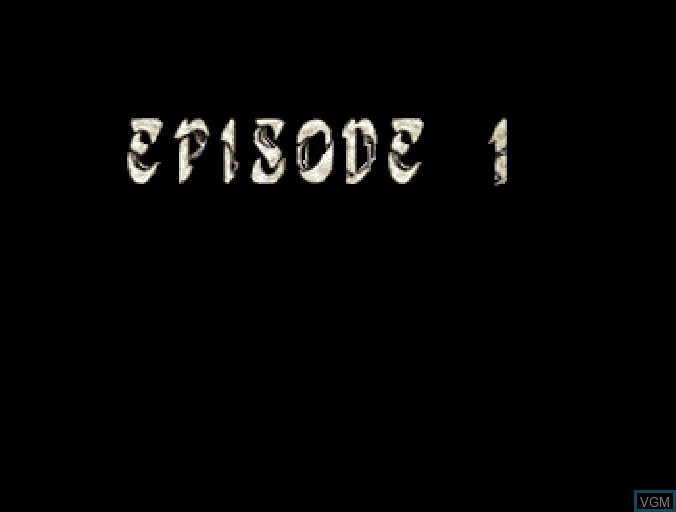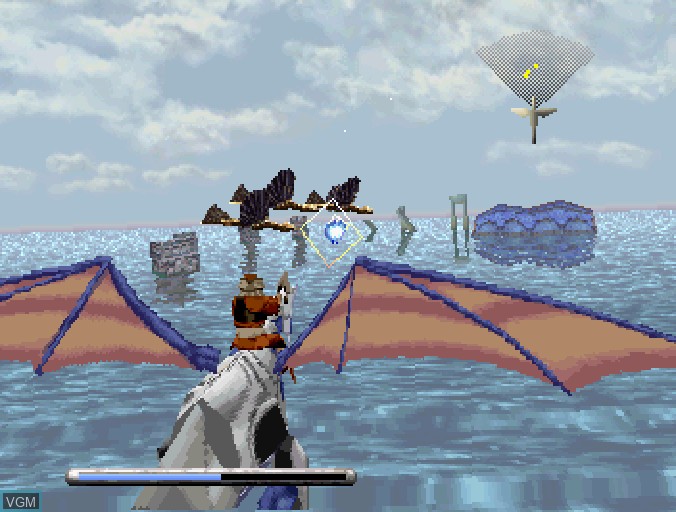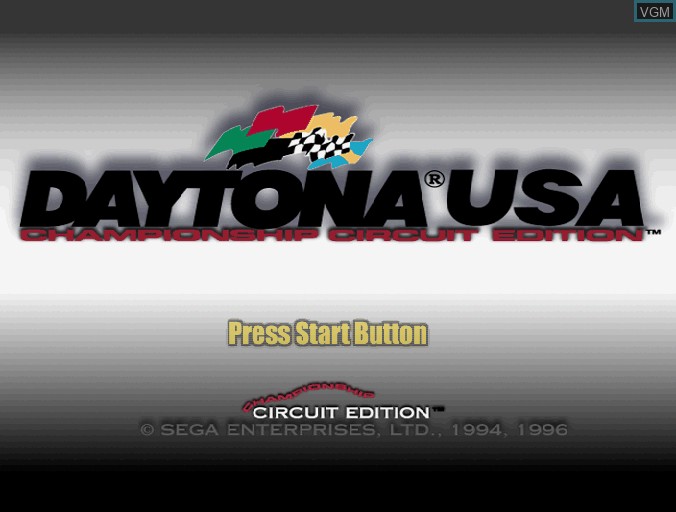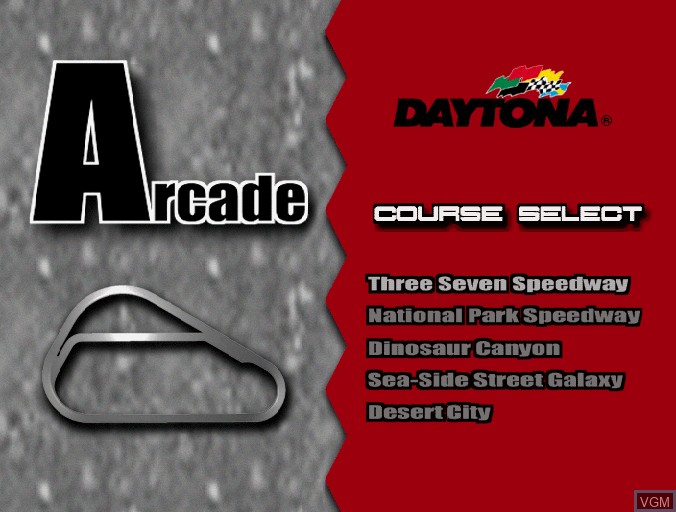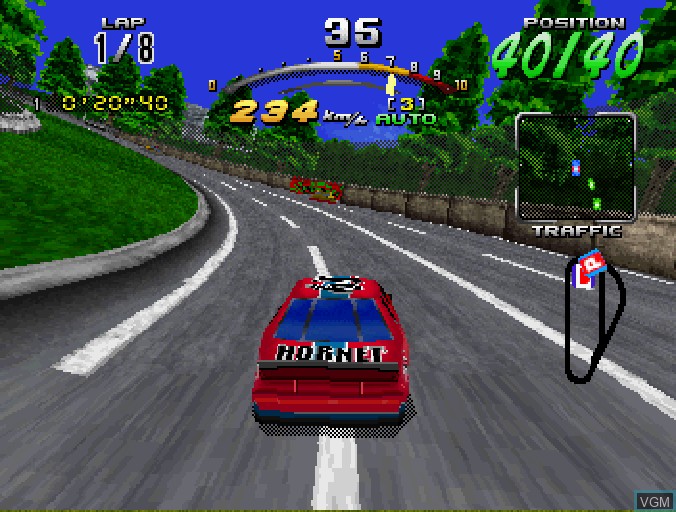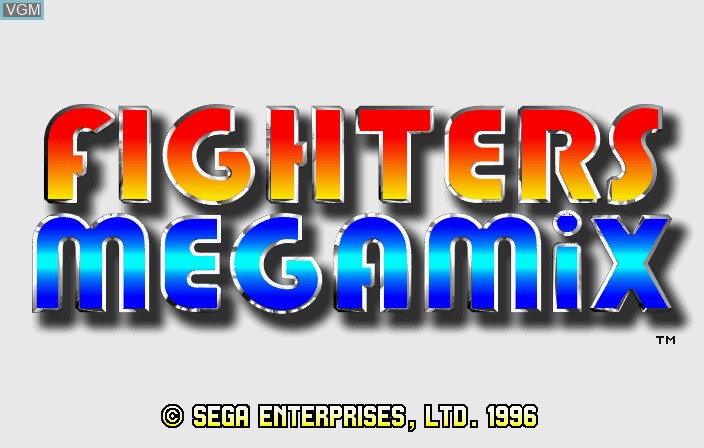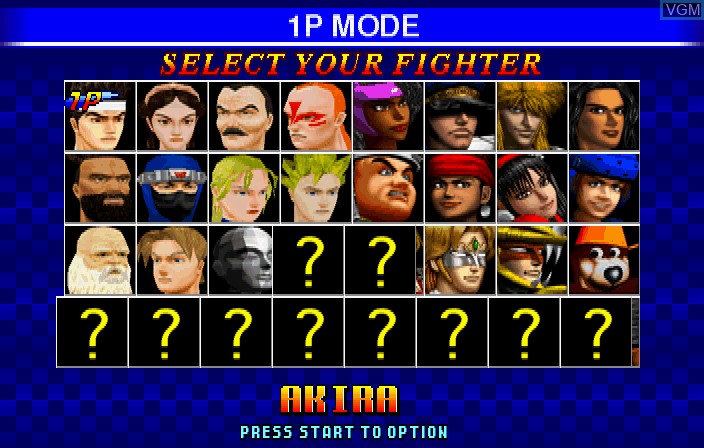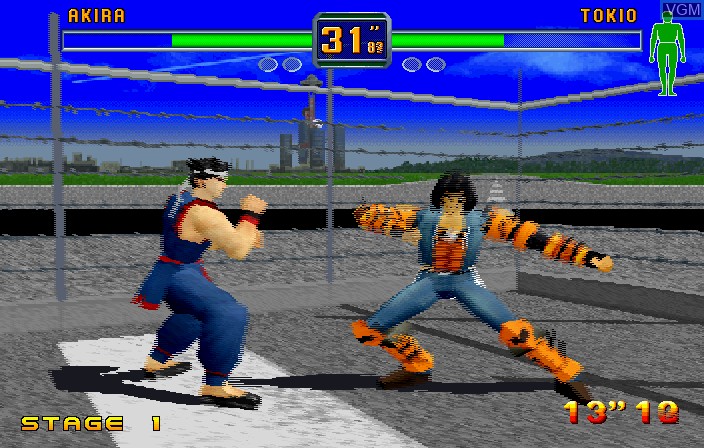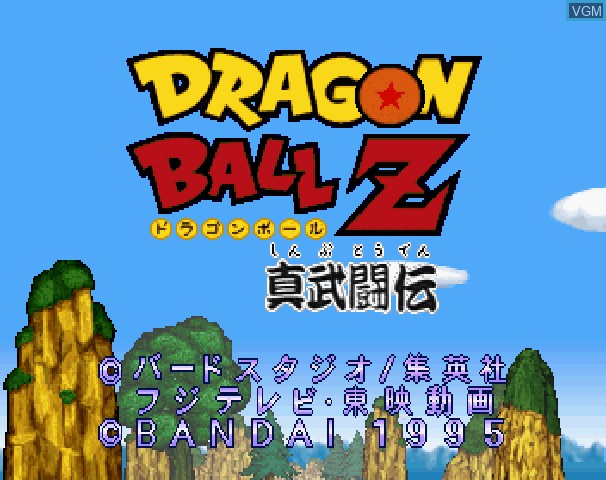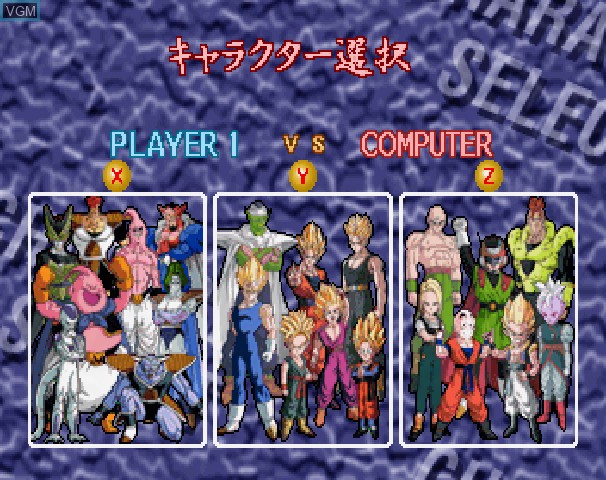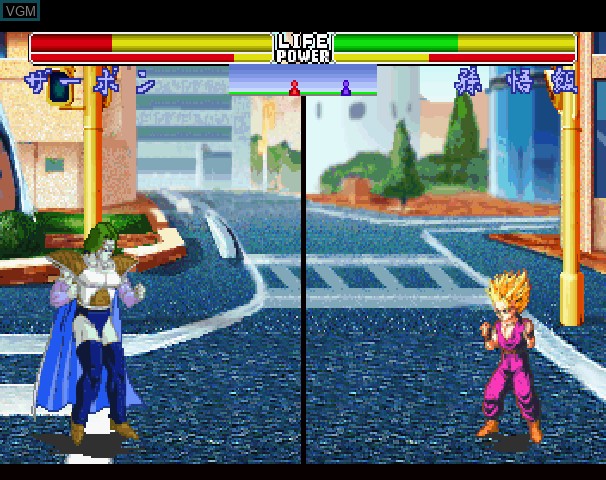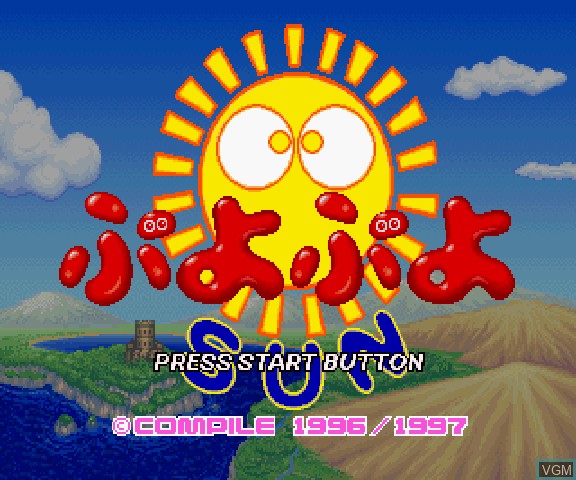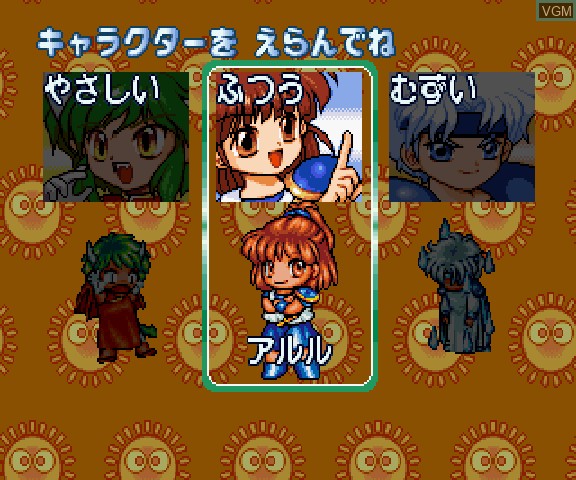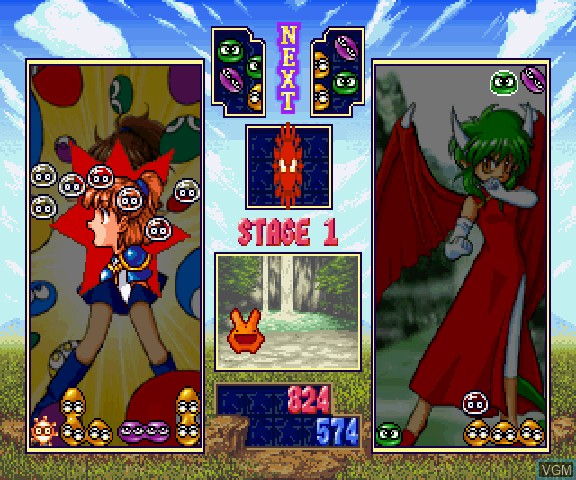Nights into dreams...
Gameplay


NiGHTS into Dreams (ナイツ into dreams) is a video game developed by Sonic Team, and was originally released for the Sega Saturn in mid-1996. It was the first game to be produced by Sonic Team not feature Sonic the Hedgehog, and debuted with the 3D Control Pad, Sega's answer to the Nintendo 64's innovative controller.
NiGHTS is seen by many to be one of the strongest original
titles for the system, with cutting edge visuals and surprisingly
complex gameplay. In the western world, NiGHTS was used as a marketing
ploy to allow the Saturn to compete against Super Mario 64 for
the Nintendo 64, and other 3D titles for the Sony PlayStation in the
1996 winter holiday season. Today it is seen as a cult classic and one
of the flagship products of Sega during the Saturn era.
For the most part, NiGHTS into Dreams is a "2.5D" video game, where the world is rendered as 3D textured polygons, but gameplay is played on a two dimensional field. The basic goal of the game is to reclaim the four stolen "Ideyas" from the four Ideya Captures spread across the level, and return them to the Ideya Palace. Ideya Captures are destroyed by collecting with them, however 20 Blue Chips dotted across the level need to be collected first.
Players usually have to take control of the jester, NiGHTS to achieve this goal. NiGHTS traverses across the 2.5 plane through the skies, performing aerial acrobatics, defeating enemies and ranking up points. However at the start of the level, NiGHTS is held captive within the Ideya Palace, and players need to control the children, Claris or Elliot. The children are not restricted to the 2.5D plane, and can in fact traverse across the map as if the game were a 3D platformer, scaling mountains and wandering across valleys. The children are, however, restricted to the map's boundaries, and will be pursued by the infamous "Alarm Egg" - a floating egg with a clock face on one side. Getting caught by the Alarm Egg is the only way the game can end within a regular level - enemies will slow the children down, but not cause any damage.
Freeing NiGHTS is as simple as entering the palace (usually placed a short distance in front of the starting point), but is not strictly necessary to rescue Ideyas from Ideya Captures. In the 3D children mode, many of the items usually found in the skies lie on the ground (including Blue Chips), and Ideya Captures are within jumping distance. This style of gameplay was adapted for the Sonic into Dreams minigame of Christmas NiGHTS.
Like Sonic the Hedgehog the game is played almost entirely with one button (![]() ,
, ![]() or
or ![]() )
and the D-Pad (or analogue stick), allowing the children to jump or
NiGHTS to speed up and spin. Spinning however, drains power from the
meter in the bottom left of the HUD, and is replenished by flying
through large yellow/orange rings. The
)
and the D-Pad (or analogue stick), allowing the children to jump or
NiGHTS to speed up and spin. Spinning however, drains power from the
meter in the bottom left of the HUD, and is replenished by flying
through large yellow/orange rings. The ![]() and
and ![]() buttons allow NiGHTS to perform acrobatics, though are only useful if
the player flies through a "Power Loop". NiGHTS can defeat enemies by
performing a "paraloop", otherwise known as moving in a clockwise or
anticlockwise circle. This can also reveal bonuses and collect multiple
items at once (including sometimes those in the background).
buttons allow NiGHTS to perform acrobatics, though are only useful if
the player flies through a "Power Loop". NiGHTS can defeat enemies by
performing a "paraloop", otherwise known as moving in a clockwise or
anticlockwise circle. This can also reveal bonuses and collect multiple
items at once (including sometimes those in the background).
Each of the four Ideyas is located on separate looped 2.5D "courses" (or "mares") for NiGHTS, each of which passes through the Ideya Palace. Players will travel around in circles until the Ideya Capture is destroyed, but items will re-spawn if the far away from the camera. NiGHTS' play is timed, and once the time runs out, you will lose any collected blue chips and become the children once more. The scoring system of NiGHTS is rather complex - scores are multiplied considerably by forming chains (links) of rings, and the value of items on the current course will increase further if the Ideya Capture is destroyed (the blue chips turning gold within this time).
To confound things further, NiGHTS has a surprisingly complex "A-Life" system, in which friendly Nightopians littered across the stage, can have their moods changed, be bred (not just with other Nightopians, but with enemies (Nightmaren), creating genetically modified "Mepians"), and be killed with very little effect on gameplay. If the player manages to not kill any Nightopians, an extra point award will be available on the fourth and final path for NiGHTS. The mood of the Nightopians can affect the level's music, though the change will only be heard if the player re-enters the stage.
Collecting all four Ideyas and taking them to the Ideya Palace will take NiGHTS to a boss, which needs to be destroyed within a certain timeframe. Here, it is impossible to play as the children, though getting hit will cause you to lose valuable seconds. Bosses vary depending on the stage, though usually involve bouncing off a weak spot or paralooping.

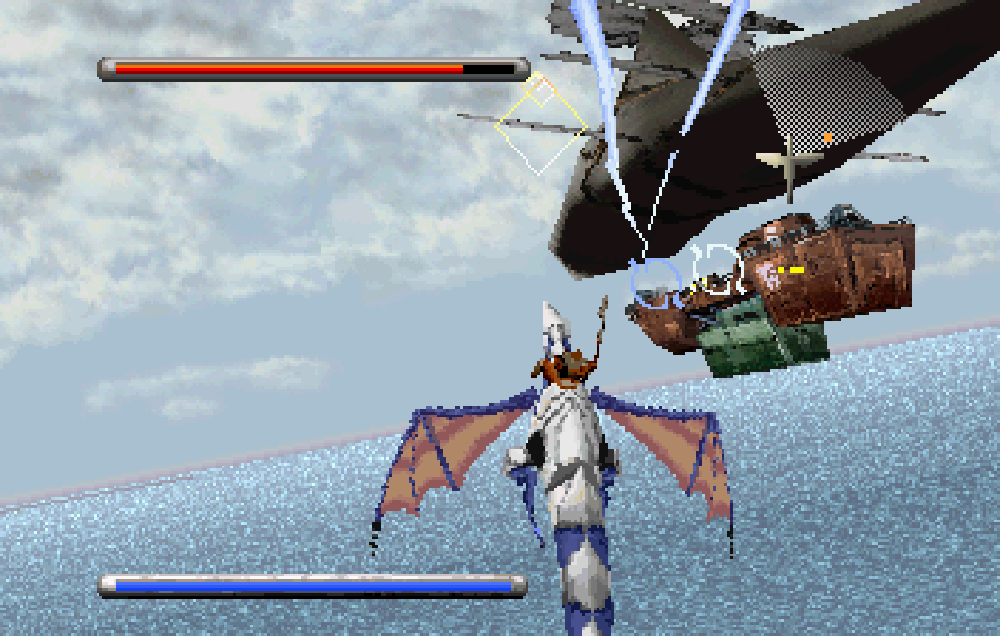
Panzer Dragoon (パンツァードラグーン) is a 3D "on-the-rails" shoot-'em up game developed by Team Andromeda in 1995. It was originally released for the Sega Saturn, becoming one of the flagship titles of the console, and one of the few games available at launch in North America and Europe.
The Panzer Dragoon games are rail shooters, except Panzer Dragoon Saga (1998), a role-playing game. All games follow the story of a hero or heroine fighting an evil empire in a post-apocalyptic world while riding a dragon. The series' name originates from its original concept designers referring to it as "armoured dragon", then feeling that this was too bland and deciding to transliterate it to German.[1] The cutscenes feature its own language, Panzerese, which is a mixed language based on a combination of Ancient Greek, English, German, Japanese, Latin, and Russian. The words in these languages were a hobby of Yukio Futatsugi, one of the core designers of the first game.
These creatures survived the downfall of the Ancients and are one of the main enemies in the series. A mysterious cataclysm, hinted at as a terrible war during the course of the series, would spell the downfall of this civilization and nearly destroy the world, leaving the survivors to eke out a bleak existence among the blasted remains in the ensuing millennia. Eventually, the Ancients and their works would gain a sort of 'godlike' respect, and a horrific regard, among some people as they passed into legend.
The remnants of these technologies are used in the development of
much of humanity's own machinery, weaponry and vehicles, such as the
unusual floating ships which are a staple of the series. A faction
called The Empire have collected and used weapons from the Ancient Age to gain dominance of the continent.
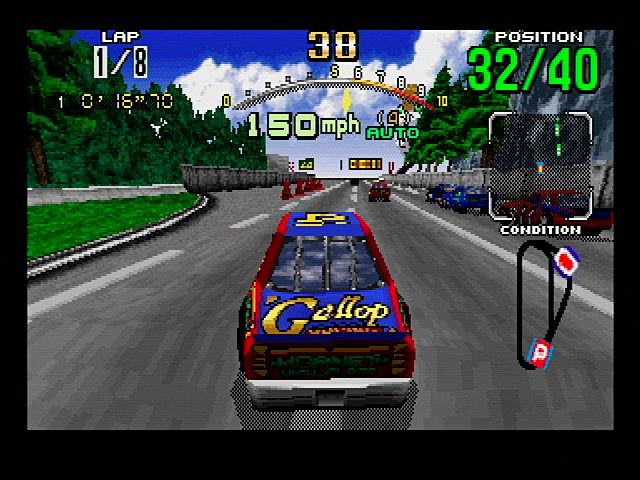



Description
Daytona USA: Championship Circuit Edition, or Daytona USA: Circuit Edition in Japan, is a racing game by Sega, specifically designed for the Sega Saturn. Released in 1996, it is a reworked and extended version of the original Daytona USA, and was developed by Sega AM3, the same team that oversaw the Saturn port of Sega Rally Championship, by using a modified version of the Sega Saturn engine of Sega Rally Championship.
This version was originally released in Europe and North America,
with some modifications done in the subsequent Japanese release.
Improvements over the original Sega Saturn version of Daytona USA
include a drastic reduction in popup, increased framerate
(now a consistent thirty frames per second), a new selection of cars,
two new courses, a 2-player mode, compatibility with the Saturn's 3D
analogue control pad and Arcade Racer steering wheel, and a ghost mode. The European release does not feature the "black bars" at the top and bottom of the screen that are present in the majority of PAL games of the era - the box boasts "slick new full screen graphics".
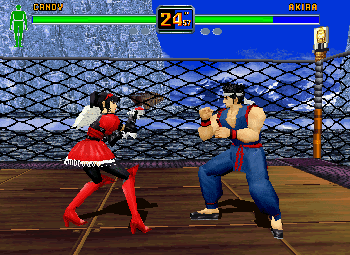
Fighters Megamix (ファイターズ メガミックス, Faitāzu Megamikkusu) is a 1996 fighting video game developed by Sega AM2 for the Sega Saturn. It is a video game crossover of various 3D arcade blockbusters by Sega, from the complete cast of Virtua Fighter 2 and Fighting Vipers to Janet from Virtua Cop 2 and the Hornet car from Daytona USA. It allows gamers to play as the bosses of both Virtua Fighter 2 and Fighting Vipers without codes.
Intended as an introduction to Virtua Fighter 3 (which was announced but never released for the Saturn), Fighters Megamix utilized the concept originally used by The King of Fighters, whereby characters and styles from different games were mixed together. The open ended rings from Virtua Fighter are present (but with no ring-out), and also the closed cages from Fighting Vipers. Virtua Fighter characters have new moves taken from Virtua Fighter 3, including the dodge move, which allows characters to sidestep, avoiding a dangerous blow and opening at the same time room for a counter. Upon release it was hailed as one of the Saturn's best games, with critics deeming its crossover mechanics a complete success, and met with strong sales.
Unlike most of AM2's games of the era, Fighters Megamix did not have an arcade release. In 1998 an adaptation for the Game.com was released by Tiger Electronics.
Dragon Ball Z: Shin Butōden
Dragon Ball Z: Shin Butōden[a] is a 1995 fighting video game developed by Tose and published by Bandai for the Sega Saturn. Based upon Akira Toriyama's Dragon Ball franchise, its gameplay is similar to the Super Butōden sub-series, consisting of one-on-one fights featuring special moves, as well as five playable modes including one featuring Mr. Satan as the main character.
Announced under the working title Dragon Ball Z: Super Butōden Sega Saturn, Shin Butōden shares the same character sprites and roster with another Dragon Ball Z fighting game developed by Tose for the PlayStation, Ultimate Battle 22, released months earlier. The game garnered average reception from critics; Reviewers praised the character roster and multiple game modes, particularly the Mr. Satan mode, but most felt mixed regarding the audiovisual presentation. The title sold approximately between 59,035 and 110,000 copies during its lifetime in Japan.
Gameplay

Dragon Ball Z: Shin Butōden is a fighting game similar to the Super Butōden sub-series. Players fight against other characters in one-on-one matches and the fighter who manages to deplete the health bar of the opponent wins the bout and becomes the winner of the match. The game contains five modes of play: Story mode, Versus mode, Group Battle mode, Tournament mode, and Mr. Satan mode. The game also features a roster of 22 playable characters and their respective transformations. Characters available are: Goku, Piccolo, Vegeta, Frieza, Android 18, Android 16, Cell, Trunks, Gohan, Tien Shinhan, Dabura, Majin Buu, Mr. Satan, and Gogeta.
Shin Butōden uses a customizable control scheme. Special moves are present in conventional format, with most commands consisting of button combinations. Characters can dash back and forth, and also charge their Ki gauge to unleash a special attack. Returning from the Super Butōden sub-series is the split-screen feature: when one of the two combatants moves far away in the playfield, the view is split to keep both fighters shown in a single screen while their positioning is kept via an on-screen radar. In Group Battle, players gets to create a team of five characters and fight against either another player or an AI-controlled character. In Mr. Satan mode, Mr. Satan is trying to raise enough money to pay off his debt to Android 18, and the player places bets on matches and cheats by using several items, such as banana peels, guns, and dynamite.
Puyo Puyo Sun Gameplay Puyo Puyo Sun builds on the gameplay seen in Puyo Puyo Tsuu,
however now includes "Sun puyo" - ojama puyo which will amplify the
damage done to the player's opponent. The changes are otherwise subtle,
but lead to a more combative game than its predecessor - trends that
would continue in the Puyo Puyo games which followed.
Puyo Puyo Sun introduces matches with as little as three
colours of puyo in play. This changes the dynamic of the game
significantly - fewer colours means popping occurs more often, and in
turn, chains are easier to create, allowing for stronger attacks. With
sun puyo then amplifying these attacks (the popping of one sun puyo can
easily create a row of ojama), matches become less about careful
placement of puyo in the field, and more about being able to counter
your opponent before being flooded.
In practice this means matches in Puyo Puyo Sun are generally shorter than Tsuu, as chaining is no longer a requirement for large attacks. It also means the weakest computer players in Sun have far more of a chance of winning than in Tsuu.
The game's three difficulty settings are represented by different
playable characters, meaning for the first time, player one does not
need to be represented by Arle (or nobody). Each character also has its
own complete set of voice samples (as opposed to Tsuu where the enemy only speaks its name and makes a noise when defeated). 
Grandia was distinct from many JRPGs of its time, in that players
can see the enemies on the world map. Whether or not an enemy is caught
from behind or vice versa, can trigger a first-strike surprise battle
in a separate screen. The battle mode is also semi-tactical; players do
not move through a grid but a series of several spots in terms of
evasion or reaching enemies. Attacks are performed as a meter goes up,
and this is the same for enemies, meaning whoever is first in line will
be next to attack. Certain skills require more time to be process and
even recover after use. Players can level up individual weapons, for
which each character is capable of using a different set. Magic is also
leveled up, like weapons, through use, though they must be obtained
using mana eggs. The field also allows people to interact with objects,
which either results in something as pointless as causing a tool to
rattle, or triggering a door, bridge, and such for another player to
travel.
Puyo Puyo Sun (ぷよぷよSUN) is the third title in the Puyo Puyo series, initially released for Sega Titan Video arcade hardware in 1996. Like most Puyo Puyo games, Puyo Puyo Sun did not see a release outside of Japan. Like its prequel, Puyo Puyo Tsuu, the "Sun" part of the name is a pun on the number "San (三)", which is Japanese for "three" (in Puyo Puyo Tsuu, "Tsu" means both "Expert" in Japanese and sounds like the number "two" in English when spoken).
